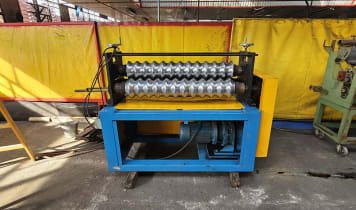- It is used to process sheet metal
- They are big machines that need a lot of space to operate.
- The machine contains a multitude of rollers posited together
Quality Great offers Personalized Thin, flat pieces of sheet metal are usually available in coil strips, and lifted up to the machine using a winch. The winch of a
profile machine unravels the coil and thereby pushes the sheet metal through the machine. The machine contains a multitude of rollers posited together, that are used to bend the sheet metal into the desired profile, as it is pushed through the machine. The machine also contains a profile
saw at the back, which cuts the profiled sheeting into the appropriate lengths.
Profile machines with pre-constructed
roller conveyors fragment the different components that are then replaced with the desired profile. On other machines, each individual roller can be hydraulically adjusted. However, on these machines the thickness of the profiled sheeting is usually restricted. Therefore, by using machines where the individual rollers are adjustable, the reconstructing of a desired profile onto another workpiece is much faster. Using these machines enables you to programme the profiles into the machine, which can then be used again just by pressing a button. When a new profile shape is required on a machine using segmented roller conveyors, these need to be replaced using a crane. The period of inactivity for these machines can last up to an hour.



